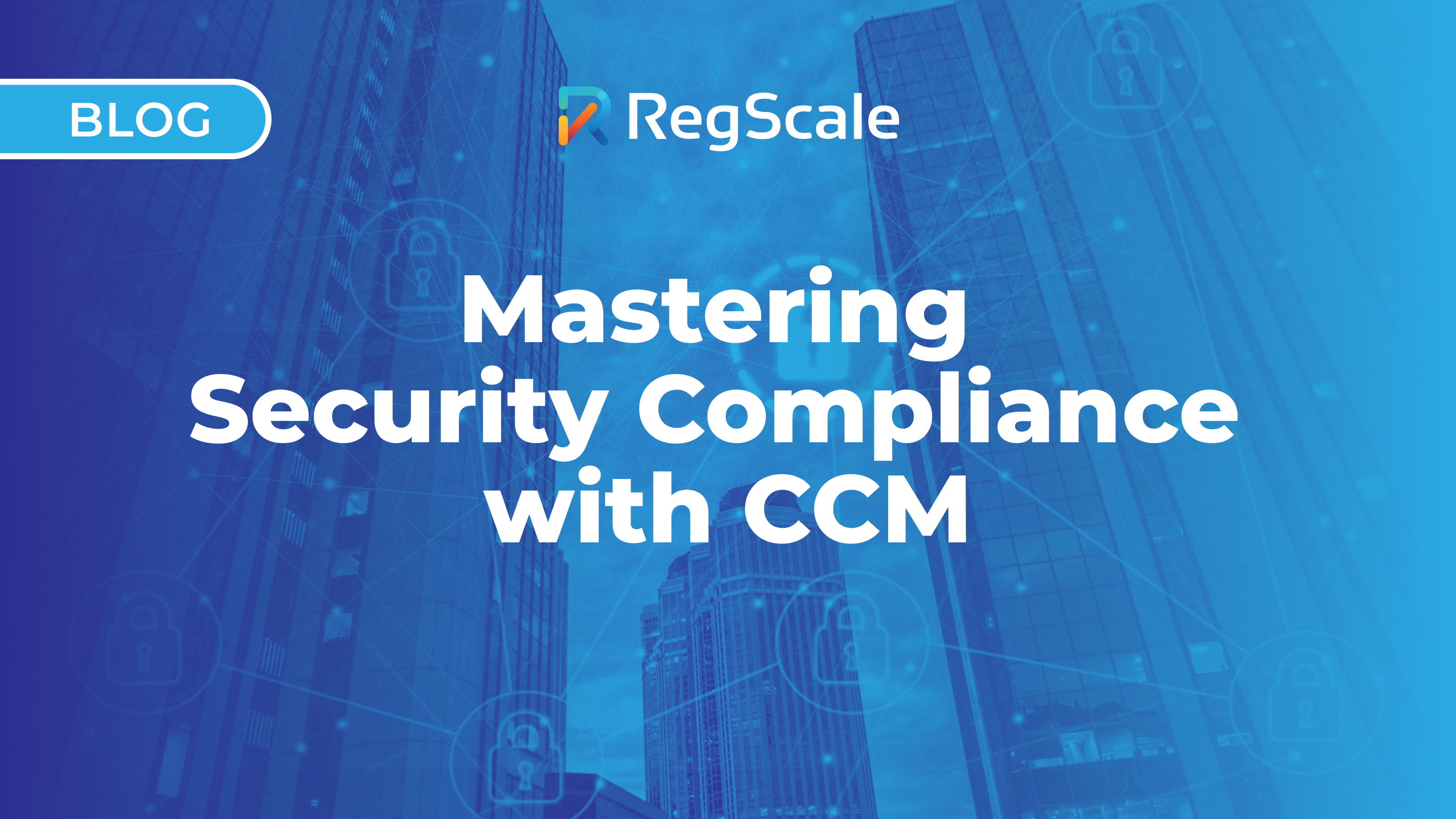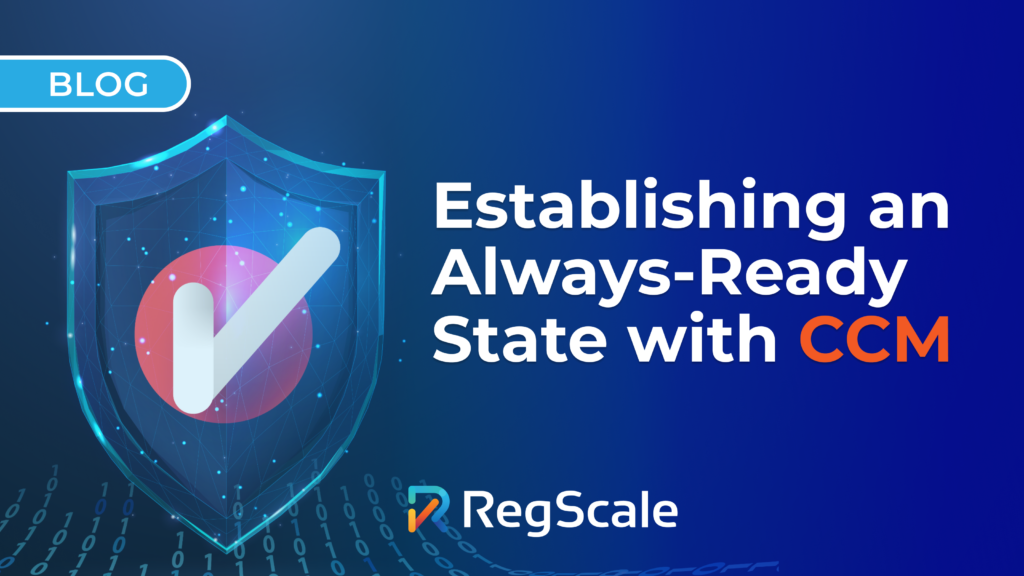
With regulations in a constant state of flux, compliance has become a continuous, strategic priority rather than a mere checklist task. As businesses expand and their operations become more intricate, managing compliance grows more complex, leading to a higher likelihood of errors. Continuous Controls Monitoring (CCM) plays a crucial role in this context, delivering a proactive and automated approach that minimizes risks and enhances the effectiveness of compliance and security efforts.
CCM leverages advanced automation and real-time monitoring to maintain continuous compliance, drastically reducing the risk of human error and the inefficiencies that come with manual processes. This dynamic approach not only streamlines compliance efforts but also ensures that organizations can swiftly adapt to new regulatory demands without disrupting their operations. As outlined in our recent white paper from Dr. Edward Amoroso, CEO of TAG Cyber, “Leveraging Continuous Controls Monitoring (CCM) for Compliance and Security,” implementing CCM can lead to a 60% reduction in audit preparation time and a 95% improvement in compliance accuracy, making it a vital tool for organizations looking to stay ahead in today’s fast-paced regulatory environment.
Shifting towards a more integrated and automated compliance strategy allows organizations to not only meet regulatory requirements more effectively but also to strengthen their overall security posture, providing a solid foundation for future growth and resilience. As we explore the key benefits and practical applications of CCM, it’s clear that mastering security compliance is no longer an option but a necessity for any organization looking to thrive in the modern regulatory environment.
The impact of CCM on compliance efficiency
The traditional approach to compliance often operates on a reactive basis, with organizations scrambling to meet regulatory requirements as audit deadlines loom. It’s a method that is not only labor-intensive and inefficient, but also leaves significant gaps in compliance management that can be exploited by cyber threats. CCM shifts this paradigm by providing continuous oversight, transforming compliance into an ongoing, proactive process rather than a last-minute scramble.
The power of CCM is evident in practical applications. For example, one branch of the DOD that integrated CCM into its operations dramatically reduced its Authority to Operate (ATO) timeline by over 36 weeks. In fact, they saved double-digit years of labor in manual efforts by integrating this automation into their processes. By automating the Risk Management Framework (RMF) and implementing continuous monitoring of cloud resources, the agency not only accelerated its compliance timeline but also enhanced the reliability and robustness of its security posture. It’s just one of many cases that underscores how CCM can streamline compliance processes, reduce manual workloads, and ultimately create a more secure and compliant environment.
This proactive approach to compliance not only mitigates the risk of non-compliance but also positions organizations to better respond to emerging threats and regulatory changes, ensuring that they remain resilient and prepared in an increasingly complex security landscape.
The role of CCM in modern compliance strategies
CCM goes beyond mere automation; it represents a strategic integration of compliance into the very fabric of an organization’s operations. By embedding Compliance as Code (CaC) within DevSecOps workflows, for example, organizations can ensure that regulatory requirements are met consistently and seamlessly from the earliest stages of development all the way through to deployment. This proactive approach significantly minimizes the need for manual compliance checks, freeing up valuable resources and allowing teams to concentrate on driving innovation and strategic growth.
The integration of compliance into DevSecOps workflows not only ensures that compliance is maintained continuously but also enhances the overall efficiency of development cycles. It’s a shift that allows organizations to detect and address compliance and security issues in real time, reducing the risk of non-compliance and enabling faster, more efficient, and more secure product releases.
Another critical advantage of CCM is its capacity to deliver real-time visibility into compliance status. With the use of interactive dashboards and automated reporting tools, stakeholders can access the most current compliance metrics at any time. This real-time insight empowers decision-makers to respond swiftly to regulatory changes, optimize compliance strategies, and make informed decisions that align with the organization’s broader objectives.
Overcoming compliance challenges with CCM
Scaling compliance efforts across diverse and evolving regulatory frameworks is a daunting task for many organizations, especially within dynamic cloud environments.
The challenge lies in simultaneously managing multiple compliance frameworks—such as FedRAMP and ISO—which often leads to complexities that can be overwhelming and resource-intensive. CCM addresses these challenges by automating the mapping of controls across various frameworks. Automation ensures consistency in compliance efforts, significantly reducing the risk of compliance gaps and errors that could expose organizations to security threats and regulatory penalties.
Streamlining the control mapping process through CCM allows organizations to sustain a cohesive compliance strategy that adapts seamlessly to various regulatory demands. By integrating compliance into the organization’s daily practices, operational efficiency is enhanced, and compliance becomes an inherent part of the workflow, rather than a burdensome task.
Companies that have implemented CCM have also reported substantial improvements in their compliance management processes. Practicing what we preach, RegScale leveraged our own CCM and achieved a FedRAMP High with “In Process” designation 300% faster than traditional methods, while also reducing associated costs by 50%. This accelerated timeline and cost efficiency were not just financial wins; they also positioned us as an industry leader in security compliance.
Having the ability to meet stringent regulatory requirements quickly and cost-effectively gives companies a competitive edge, demonstrating the strategic value of integrating CCM into their compliance framework.
Master future compliance with CCM
As regulation continues to evolve, having a well-fortified and adaptive compliance strategy is more critical than ever. Becoming proficient in compliance is often a journey that requires time, effort, and precision, but CCM offers a way to streamline this process like never before. By embedding automation and real-time monitoring into your compliance strategy, CCM not only keeps you ahead of regulatory changes, but also transforms compliance from a reactive necessity into a proactive advantage.
Is it time to optimize your compliance efforts? Schedule a demo with our team. We’ll guide you through our advanced CCM solutions, showing how you can achieve continuous oversight, streamline your workload, and stay ahead of regulatory demand. Turn compliance into your competitive edge and navigate the toughest regulatory challenges with confidence.
Ready to get started?
Choose the path that is right for you!
Skip the line
My organization doesn’t have GRC tools yet and I am ready to start automating my compliance with continuous monitoring pipelines now.
Supercharge
My organization already has legacy compliance software, but I want to automate many of the manual processes that feed it.
